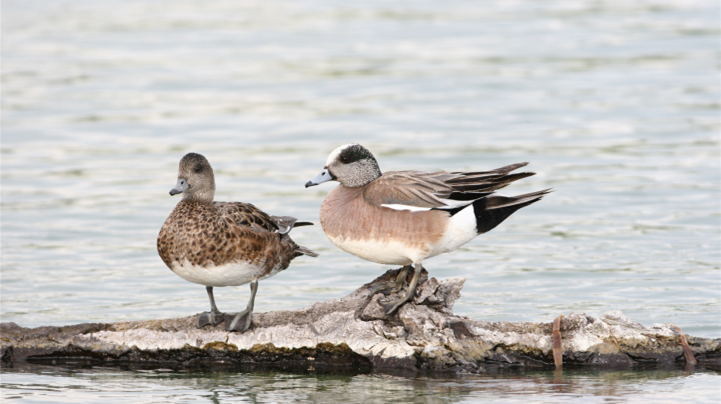Mareca americana
©Ducks Unlimited Canada/ Brian WolitskiA large white patch on the top of its head has earned the American Wigeon the nickname “baldplate”, but there is nothing bald about it. Its bold colours make it a colourful ambassador to waterfowl and wetlands.
Habitat
Look for American Wigeons in wetlands, like ponds and marshes, lakes, and rivers, across western North America, with dry, grassy uplands nearby. Migrating south for winter, they can be found in wetlands, rivers, lakes, bays, estuaries, and tidal flats, that have plenty of plants in the southern United States, the
Caribbean, Mexico, Central America, and even northern South America.
Food
Plants are the main food of American Wigeons, both above, and below, the water. During breeding season they eat insects and aquatic invertebrates as well to get protein, especially females for egg laying.
Behaviour
American Wigeons are dabbling ducks. They tip their rumps in the air and their heads underwater to feed. Their shorter, more goose-like bills allow them to grab and pull plants that other ducks would find more difficult. As dabblers, they have powerful legs, making them good walkers on land and able to quickly lift from the ground, or the water’s surface, when they sense danger. Like other waterfowl, they change their feathers in summer, known as moulting, and will fly to secluded wetland areas until the moult is finished.
Conservation
Wetland loss is the biggest concern for American Wigeons, reducing nesting and feeding areas. Wigeons, like other waterfowl, are hunted, but proper management ensures populations remain stable.


